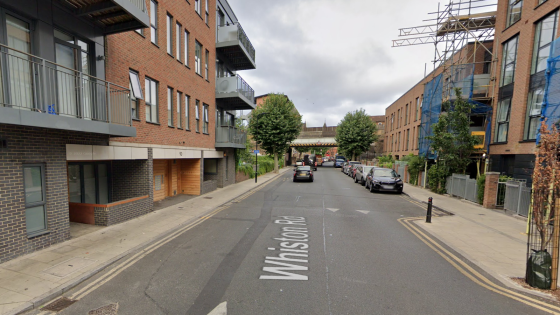PCMag editors select and review products independently. If you buy through affiliate links, we may earn commissions, which help support our testing.

The iPhone 16 family runs the latest Apple silicon. The iPhone 16 and 16 Plus use the A18, and the iPhone 16 Pro and 16 Pro Max bump up to the A18 Pro. Apple hasn’t shared too much information about either chip. In fact, if we’re to believe the company’s website, a single GPU core is all that differentiates the two.
Based on the chip’s architectural diagram, the A18 includes two performance cores, four efficiency cores, five GPU cores, and 16 Neural Engine cores (or NPU). The A18 Pro adds one more GPU core to the mix, giving it a total of six rather than five. There are likely other differences. Notably, Apple hasn’t defined the clock speeds for the CPU cores. The A18 Pro likely has quicker CPU and GPU clock speeds than the A18. Given the drastic differences in video capture capabilities, it’s also likely that the image signal processor (ISP) is different in some regard. All we know with any real confidence is that all four iPhones share 8GB of RAM, the most ever in an iPhone.
With few details to go by, the best way to determine what sets these two processors apart is by testing them. We ran a series of benchmarks to see what makes the A18 Pro earn its “Pro” moniker. Here are the results. Note that we’ve included results for the A17 Pro chip in the iPhone 15 Pro and iPhone 15 Pro Max in the chart for further comparison.
Benchmarking the Apple A18 and A18 Pro
PCMag relies on a handful of benchmarking apps for evaluating phones. Each app we use is available via the App Store, so you can run your own tests at home to see how your results compare to ours.
The first test we run is Geekbench 6. It’s a test that primarily evaluates CPU performance. It generates scores based on single-core and multi-core performance. The Apple A18 reached a score of 3,091 on the single-core test and 7,129 on the multi-core test. The Apple A18 Pro, meanwhile, reached 3,279 and 7,855, respectively, for the single- and multi-core tests. The difference here is fairly minor at just 4.5% and 10.1%, respectively. For reference, the Samsung Galaxy S24 Ultra, which uses a Qualcomm Snapdragon 8 Gen 3 for Galaxy processor, reached 2,273 and 7,056 on the same tests, and the Tensor G4 of the Google Pixel 9 Pro XL hit 1,961 and 4,718.
The iPhones can run the challenging AnTuTu benchmark. It’s a serious test that assesses all aspects of the processor, including the CPU and GPU. Here, the A18 scored 1,539,646, and the A18 Pro scored 1,713,073. This difference is similar to the Geekbench result in that the A18 Pro scored about 10.1% better.
We made sure to see what the A18 and A18 Pro GPUs can do, considering it’s one of the few distinctions we know about with certainty. The first GPU benchmark we use is 3DMark Wild Life Extreme. This test runs for a minute and checks to see how many frames the GPU can push in an emulated gaming environment. In this rundown, the A18 scored 3,881 with an average frame rate of 23.2 frames per second and the A18 Pro hit 4,592 at an average frame rate of 27.5 frames per second. 3DMark says the A18 and A18 Pro’s results are better than 86% and 90% of all devices that have run its benchmark. The difference between the two chips is 15.5%, so that extra GPU core is adding some horsepower.
GFXBench is another benchmark for assessing GPU performance, particularly in gaming. It contains several tests at varying resolutions. We use the Aztec Ruins (High Tier), 4K Aztec Ruins (Offscreen), 1440p Manhattan 3.1.1 (Offscreen), and 1080p T-Rex (Offscreen) tests. The A18 hit average frames per second of 57.46, 20.42, 81.78, and 351.98 on the four tests, respectively, and the A18 Pro tallied averages of 58.8, 26,05, 94.05, and 385.65 frames per second. Again, the A18 Pro’s results show that it is better at GPU-intensive tasks. Comparatively, the Galaxy S24 ran at an overall average of 66fps, and the Pixel 9 Pro XL ran at an average of 43fps.
Last, we ran Geekbench AI, which is a newer test that uses real-world machine learning tasks to rank AI performance. It combines the scores across the CPU, GPU, and NPU to see just how well a processor can handle AI. On this test, the A18 scored 4,171, 7,288, and 5,810 on three tests, and the A18 Pro scored 4,549, 7,815, and 6,242, respectively. The difference between the two is more meager here at just 7.2%. This will matter most when it comes to Apple Intelligence tasks (once they arrive).
So, How Much Faster Is the A18 Pro?
According to our results, the A18 Pro is, on average, about 10% better than the A18 on the benchmarks we assessed. That’s not a huge difference. The A18 Pro clearly outshines the A18 in terms of GPU performance, which matters most in applications like gaming and media creation. This aligns with Apple’s marketing, which pitches the iPhone Pro models at creators and the regular iPhones at regular people.
For more, read up on how all four iPhone 16 models stack up to one another and how to get the best price on the one you want.
Source Agencies

